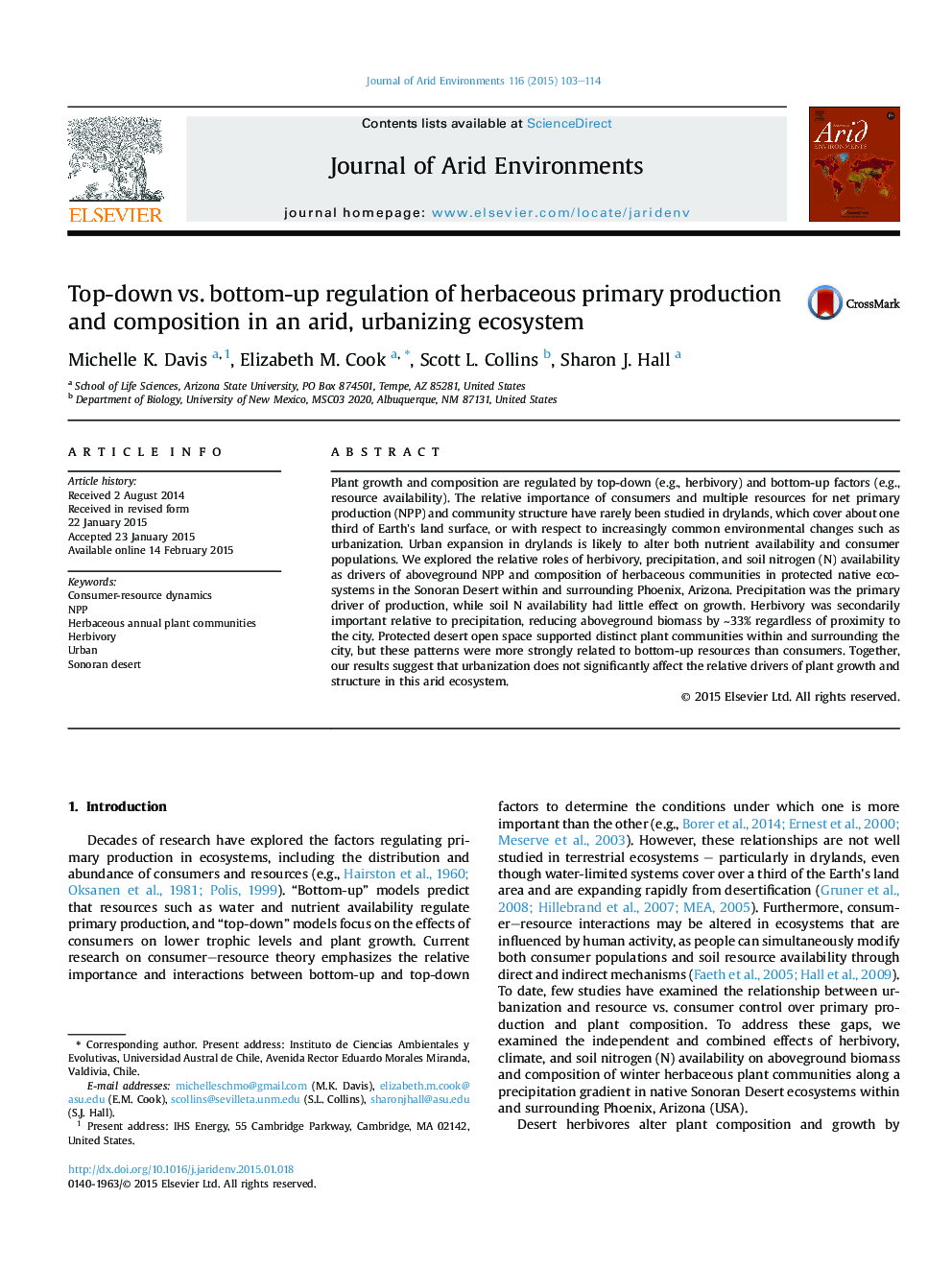| کد مقاله | کد نشریه | سال انتشار | مقاله انگلیسی | نسخه تمام متن |
|---|---|---|---|---|
| 4392923 | 1618243 | 2015 | 12 صفحه PDF | دانلود رایگان |
• The relative roles of consumers and resources on NPP are understudied in drylands.
• In near-urban parks, bottom-up factors controlled growth and composition of annuals.
• Herbivory was secondarily important after rainfall, reducing plant biomass by 33%.
• Rates of herbivory were not affected by proximity to the city.
• Urban environmental change does not alter the drivers of NPP in near-urban areas.
Plant growth and composition are regulated by top-down (e.g., herbivory) and bottom-up factors (e.g., resource availability). The relative importance of consumers and multiple resources for net primary production (NPP) and community structure have rarely been studied in drylands, which cover about one third of Earth's land surface, or with respect to increasingly common environmental changes such as urbanization. Urban expansion in drylands is likely to alter both nutrient availability and consumer populations. We explored the relative roles of herbivory, precipitation, and soil nitrogen (N) availability as drivers of aboveground NPP and composition of herbaceous communities in protected native ecosystems in the Sonoran Desert within and surrounding Phoenix, Arizona. Precipitation was the primary driver of production, while soil N availability had little effect on growth. Herbivory was secondarily important relative to precipitation, reducing aboveground biomass by ∼33% regardless of proximity to the city. Protected desert open space supported distinct plant communities within and surrounding the city, but these patterns were more strongly related to bottom-up resources than consumers. Together, our results suggest that urbanization does not significantly affect the relative drivers of plant growth and structure in this arid ecosystem.
Journal: Journal of Arid Environments - Volume 116, May 2015, Pages 103–114
